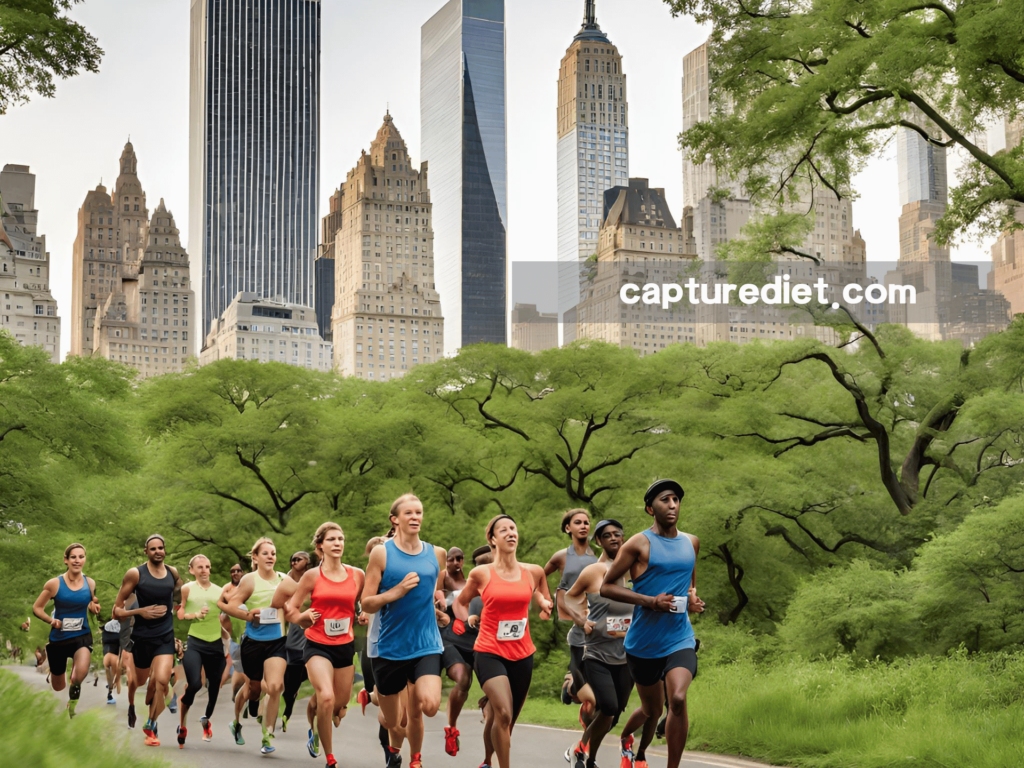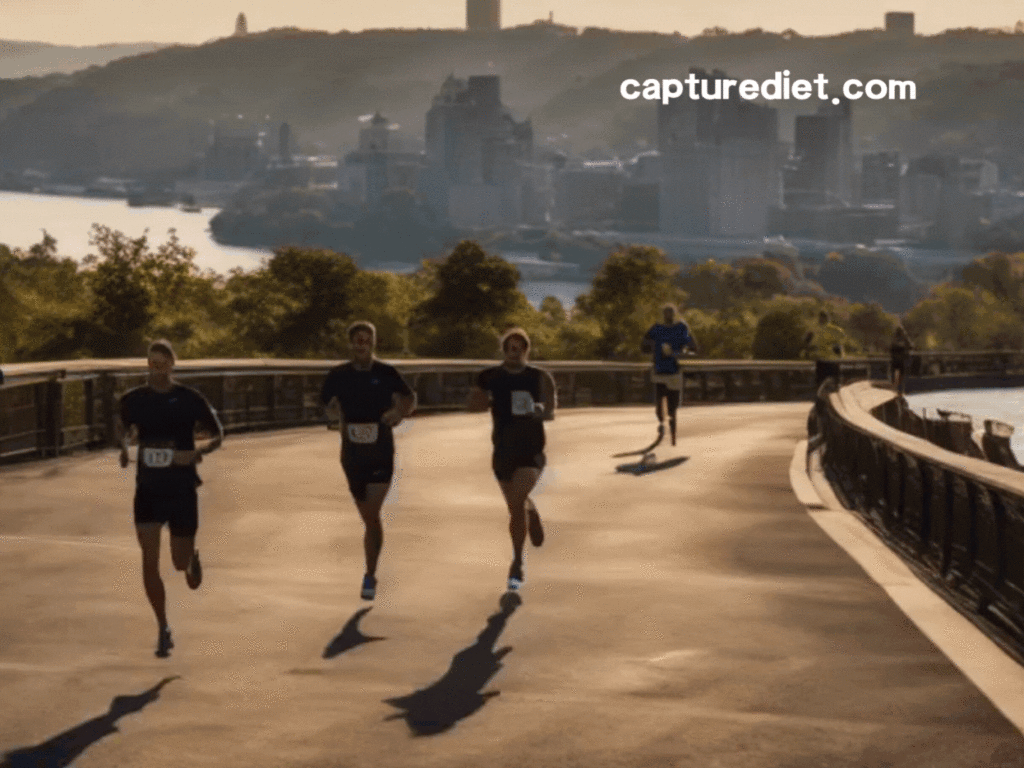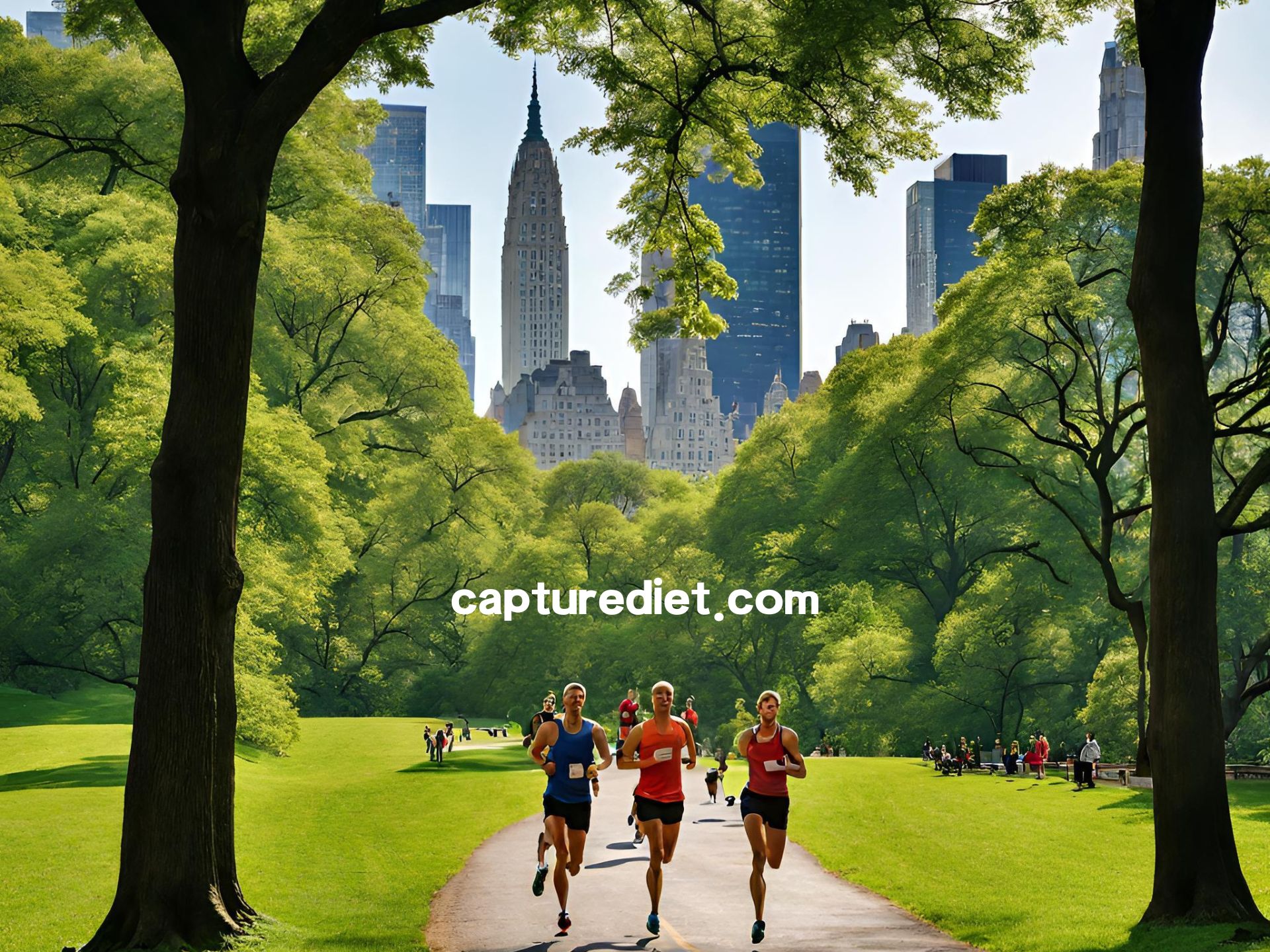When it comes to running, New York City offers a diverse selection of routes that cater to everyone, from casual runners to professional athletes. In this article, we will explore the best running routes this vast metropolis has to offer, ensuring you can reach your fitness goals while enjoying the sights and sounds of the Big Apple.
Table of Contents
< Running Routes in New York City >
1. Central Park’s Scenic Loop
With over six miles of scenic pathways, Central Park is a runner’s paradise nestled in the heart of Manhattan. The picturesque park provides an escape for runners who wish to step away from the bustling city streets while still taking in breathtaking skyscrapers around this sprawling green space.
- Distance: 6 miles
- Terrain: Mixed (asphalt, gravel, dirt)

★ Central Park’s History
Central Park’s Scenic Loop, a picturesque gem within the heart of Manhattan, is more than just a park. It’s a living piece of New York City’s history and a testament to visionary urban planning.
- The Birth of Central Park
Central Park’s story begins in the mid-19th century when New York City was experiencing rapid urbanization. The need for a green oasis within the concrete jungle became evident.
- The Visionaries Behind It
The park’s design can be attributed to the brilliant minds of Frederick Law Olmsted and Calvert Vaux. Their collaborative vision aimed to create a harmonious coexistence of nature and urban life.
- Transforming the Landscape
Before Central Park, the land was far from the lush paradise we know today. It was rocky, swampy, and in need of a transformation that would allow nature to flourish amidst the city’s chaos.
- The Scenic Loop’s Emergence
Central Park’s Scenic Loop, encircling the Reservoir, became an iconic feature of the park. Initially designed for water supply, it has evolved into a tranquil haven for visitors.
- Recreation and Relaxation
Over the years, Central Park’s Scenic Loop has been a hub for outdoor enthusiasts. Whether it’s leisurely strolls, jogging, or cycling, this loop offers the perfect escape from the city’s hustle and bustle.
- A Haven for Artists and Filmmakers
Central Park’s Scenic Loop has inspired countless artists, photographers, and filmmakers. Its beauty and tranquility have graced many famous works of art and films.
- Seasonal Delights
Central Park transforms with the seasons. Spring brings blooming flowers, and autumn paints the landscape in vibrant hues, making every visit unique.
- Restoration and Preservation
Preserving Central Park’s historical significance and natural beauty has been an ongoing effort. Restoration projects ensure that the park remains a green sanctuary in the city.
- A Timeless Attraction
Central Park remains one of the most visited urban parks globally, welcoming millions of visitors who come to experience its timeless beauty.
In conclusion, Central Park’s Scenic Loop is more than just a park within a city; it’s a testament to the enduring vision of its creators. Whether you’re a local New Yorker or a curious traveler, exploring this urban oasis is an opportunity to step back in time while enjoying the present beauty it offers.
2. West Side Hudson River Park Path
Tracing along the Hudson River from Battery Park up to George Washington Bridge, the West Side Hudson River Park Path allows runners to enjoy incredible river views while passing through a myriad of parks and recreational facilities.
- Distance: 13.5 miles
- Terrain: Paved

★ Hudson River Park Path’s History
- A Scenic Journey Begins
The West Side Hudson River Park Path, a picturesque recreational route, unfolds a story that intertwines urban transformation and natural beauty.
- Pioneering Urban Revival
The path’s history finds its roots in the revitalization of Manhattan’s West Side. In the late 20th century, a once-neglected waterfront was transformed into a vibrant public space.
- Hudson River Park Emerges
The West Side Hudson River Park, where the path resides, was born out of ambitious urban planning. Established in the 1990s, it was envisioned as a green oasis along the river.
- Path Along the Riverside
The creation of the path was a pivotal part of this project. Stretching alongside the Hudson River, it offered a new way for New Yorkers to connect with the waterfront.
- Connecting Communities
As the path came to life, it quickly became a hub for both recreational enthusiasts and local residents. It brought together people from various neighborhoods, bridging communities.
- Recreational Haven
The path’s appeal transcends generations. It provides space for cycling, jogging, leisurely strolls, and moments of relaxation with stunning river views.
- Environmental Stewardship
The path also embodies the commitment to environmental conservation. Its design incorporates eco-friendly elements, contributing to the sustainability of the area.
- Cultural and Artistic Encounters
In addition to being a recreational haven, the path hosts cultural events, art installations, and performances, enriching the local cultural tapestry.
- Ongoing Development
The West Side Hudson River Park Path continues to evolve. Ongoing improvements and extensions ensure its relevance and accessibility to a growing urban population.
- A Beloved Waterfront Retreat
Today, the path stands as a testament to the city’s dedication to green spaces and community development. It remains a beloved retreat, offering a serene escape from the city’s energy.
In conclusion, the West Side Hudson River Park Path narrates a compelling tale of urban revitalization and the enduring connection between New Yorkers and their waterfront. Whether you seek recreation, tranquility, or cultural experiences, this path invites all to share in its history and scenic beauty.
3. Brooklyn Bridge Park Piers
Taking a trip across the Brooklyn Bridge is an opportunity to soak in breathtaking panoramic views of Manhattan’s skyline. Starting at the famous Brooklyn Bridge Park, you can jog along the waterfront and enjoy the outdoor fitness centers as well as views of New York Harbor’s iconic landmarks.
- Distance: 0.2 miles per pier
- Terrain: Mixed (paved, wood planks)
★ Brooklyn Bridge Park Piers’s History
- A Legacy by the Water
Brooklyn Bridge Park Piers, a waterfront haven nestled along the East River, harbor a captivating history that echoes the evolution of Brooklyn and its relationship with the water.
- A Riverside Transformation
The story of the park’s piers commences with their industrial roots in the 19th century. These piers were bustling centers of trade, connecting Brooklyn to Manhattan and beyond.
- Rebirth as Public Spaces
With changing times, the need for the bustling piers diminished. In the late 20th century, a visionary transformation began to convert these spaces into a public park.
- Brooklyn Bridge Park Takes Shape
The creation of Brooklyn Bridge Park, home to the piers, was a testament to the borough’s commitment to preserving its waterfront and heritage.
- The Iconic Piers
Each pier within the park has a unique identity and purpose. Piers 1 to 6 offer various amenities, from playgrounds to sports fields, serving the diverse needs of the community.
- A Green Oasis
The park’s development also emphasized ecological sustainability. The native plantings, green roofs, and rain gardens showcase a commitment to the environment.
- A Cultural Hub
The piers and the park as a whole have become cultural hubs. They host various events, including concerts, art installations, and outdoor movies, adding vibrancy to the area.
- An Ongoing Journey
The history of Brooklyn Bridge Park Piers is an ongoing narrative. The park continues to evolve, with new phases and developments, ensuring its relevance and appeal.
- A Waterfront Community
Today, Brooklyn Bridge Park Piers stand as a testament to the resilient spirit of Brooklyn. They offer a place for recreation, relaxation, and a sense of community by the water.
In conclusion, the history of Brooklyn Bridge Park Piers reflects the dynamic character of Brooklyn itself. It showcases how the borough has reimagined its waterfront, preserving its industrial past while creating a contemporary, vibrant, and environmentally conscious urban oasis.
4. The High Line
A unique blend of culture and nature, the High Line offers runners a fascinating elevated journey through gardens, artwork, and industrial history. This repurposed rail line will lead you through various Manhattan neighborhoods with its urban-meets-green design.
- Distance: 1.45 miles
- Terrain: Mostly paved
★ The High Line’s History
- A Storied Past
The High Line, a unique urban park in Manhattan, possesses a fascinating history that reflects the evolution of industrial landscapes into green, public spaces.
- Rise of the Railway
The High Line’s story begins in the 1930s when it served as an elevated railway track, facilitating the transport of goods along Manhattan’s West Side.
- Abandonment and Neglect
Over time, the railway became obsolete, and by the 1980s, it faced abandonment. Nature started reclaiming the High Line, with wild plants taking root.
- Community Vision
In the 2000s, a community-driven vision emerged to transform the High Line into a park. The “Friends of the High Line” organization played a crucial role in this endeavor.
- A Park in the Sky
In 2009, the first section of the High Line opened as a park, combining the charm of its industrial past with beautifully designed green spaces and walking paths.
- Distinct Design Elements
The park’s design incorporates several innovative features, such as the “peel-up” benches and the “plank bench,” which pay homage to the railway’s history.
- Art and Culture
The High Line has become a hub for art and culture. It features various art installations and hosts events that enrich New York City’s cultural landscape.
- Sustainability and Biodiversity
The park’s commitment to sustainability is evident through its eco-friendly practices and a diverse range of plantings that attract birds and pollinators.
- Ongoing Development
The High Line is an ever-evolving project. It continues to expand and develop, embracing new sections and architectural features that enhance its appeal.
- Iconic Views
The park offers stunning views of Manhattan’s architecture and the Hudson River, making it a favorite destination for both locals and tourists.
In conclusion, the history of The High Line encapsulates a remarkable journey from industrial decay to vibrant urban renewal. It stands as a testament to the power of community vision, sustainability, and the transformation of urban landscapes into unique public spaces. Whether you visit for the views, the art, or the greenery, The High Line remains a symbol of innovation and reclamation in the heart of New York City.

